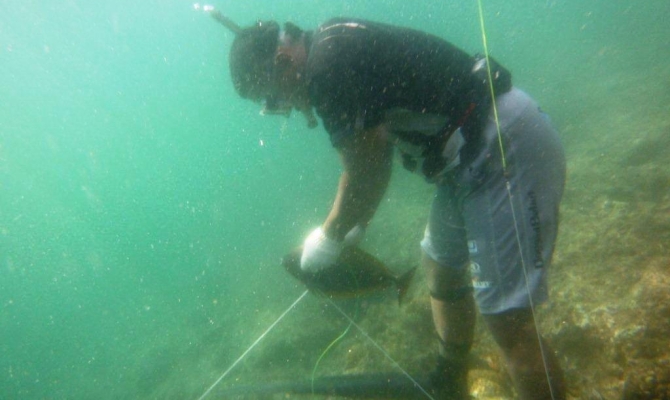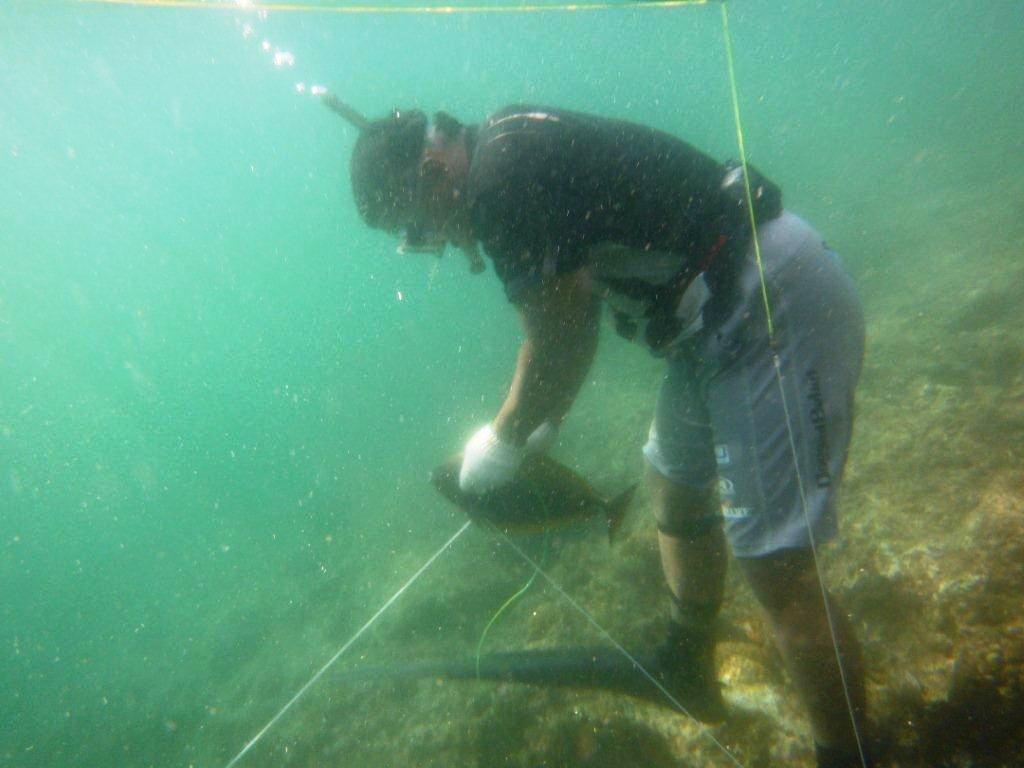
Island and Ocean Ecosystems
4 December 2013, Suva Fiji - By Carolyn Kitione, a journalism student at USP:- Hope remains for Nauru despite the damage caused by phosphate mining that has destroyed about 80 per cent of the island's environment.
In a video presentation at the 9th Pacific Islands Conference on Nature Conservation and Protected Areas, Nauru's delegates said research had established that the island's ecosystem would be able to survive despite the strain from the strip mining.
The research was conducted by a team of scientists, led by Mr. Bruce Jefferies, SPREP's Terrestrial Ecosystems Management Officer.
In the video, Dr Sheila McKenna, a coral reef health specialist, said Nauru's reef biodiversity appeared to support this.
Ms McKenna said while the reefs in Nauru had not been extensively explored, most areas of the coral reef were still healthy.

"There is a good chance that there is some endemism here of species only found here because you're isolated in the middle of the deep ocean," she said.
The land survey by the research team also showed the landscape was gradually healing from reforestation.
Botanist and ecosystems specialist Professor Art Wheeler said in the video he was disturbed by the damage to the ecosystem through mining.
"This is a very interesting place because there had been so much damage over the years," he said.
"I've never been in a situation like this before; I'm just so disturbed."
The conference heard that 70 per cent of the land was uninhabitable and the biodiversity of the island was severely affected by decades of phosphate mining.
Nauru is dominated by a central phosphate plateau and is surrounded by coral reefs, ringed by wind-swept coconut trees and sandy beaches.
Carolyn Kitione is a member of the Media Team providing coverage of the 9th Pacific Islands Conference on Nature Conservation and Protected Areas from 2 to 6 December in Suva, Fiji. This is a partnership between the Fiji National University (FNU), University of the South Pacific (USP), SPREP and Pacific Islands News Association (PINA) whereby a team of 10 journalism students are mentored by senior reporters as they cover the conference. This activity is funded by the Pacific Assistance Media Scheme (PACMAS).
In a video presentation at the 9th Pacific Islands Conference on Nature Conservation and Protected Areas, Nauru's delegates said research had established that the island's ecosystem would be able to survive despite the strain from the strip mining.
The research was conducted by a team of scientists, led by Mr. Bruce Jefferies, SPREP's Terrestrial Ecosystems Management Officer.
In the video, Dr Sheila McKenna, a coral reef health specialist, said Nauru's reef biodiversity appeared to support this.
Ms McKenna said while the reefs in Nauru had not been extensively explored, most areas of the coral reef were still healthy.

"There is a good chance that there is some endemism here of species only found here because you're isolated in the middle of the deep ocean," she said.
The land survey by the research team also showed the landscape was gradually healing from reforestation.
Botanist and ecosystems specialist Professor Art Wheeler said in the video he was disturbed by the damage to the ecosystem through mining.
"This is a very interesting place because there had been so much damage over the years," he said.
"I've never been in a situation like this before; I'm just so disturbed."
The conference heard that 70 per cent of the land was uninhabitable and the biodiversity of the island was severely affected by decades of phosphate mining.
Nauru is dominated by a central phosphate plateau and is surrounded by coral reefs, ringed by wind-swept coconut trees and sandy beaches.
Carolyn Kitione is a member of the Media Team providing coverage of the 9th Pacific Islands Conference on Nature Conservation and Protected Areas from 2 to 6 December in Suva, Fiji. This is a partnership between the Fiji National University (FNU), University of the South Pacific (USP), SPREP and Pacific Islands News Association (PINA) whereby a team of 10 journalism students are mentored by senior reporters as they cover the conference. This activity is funded by the Pacific Assistance Media Scheme (PACMAS).